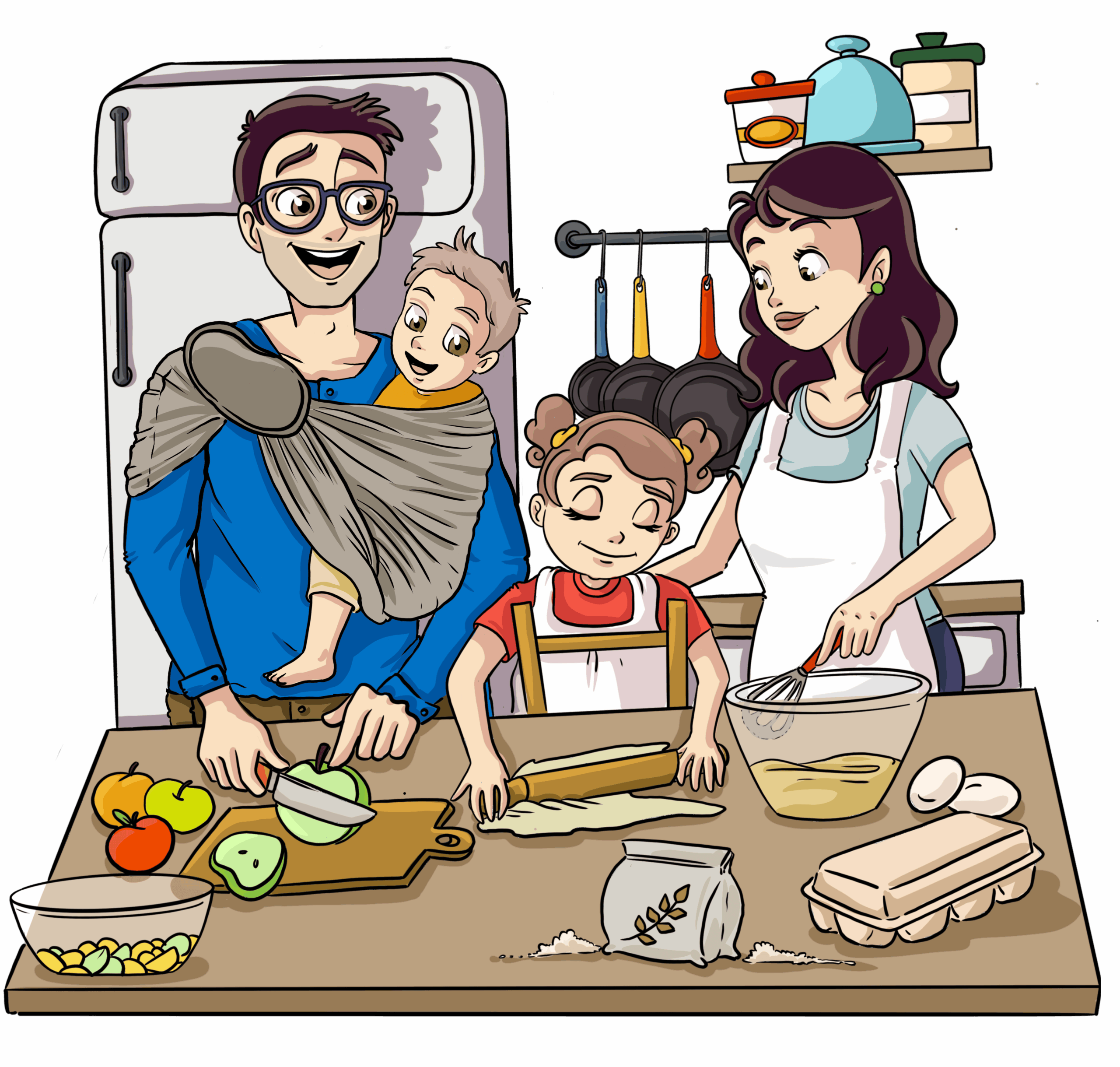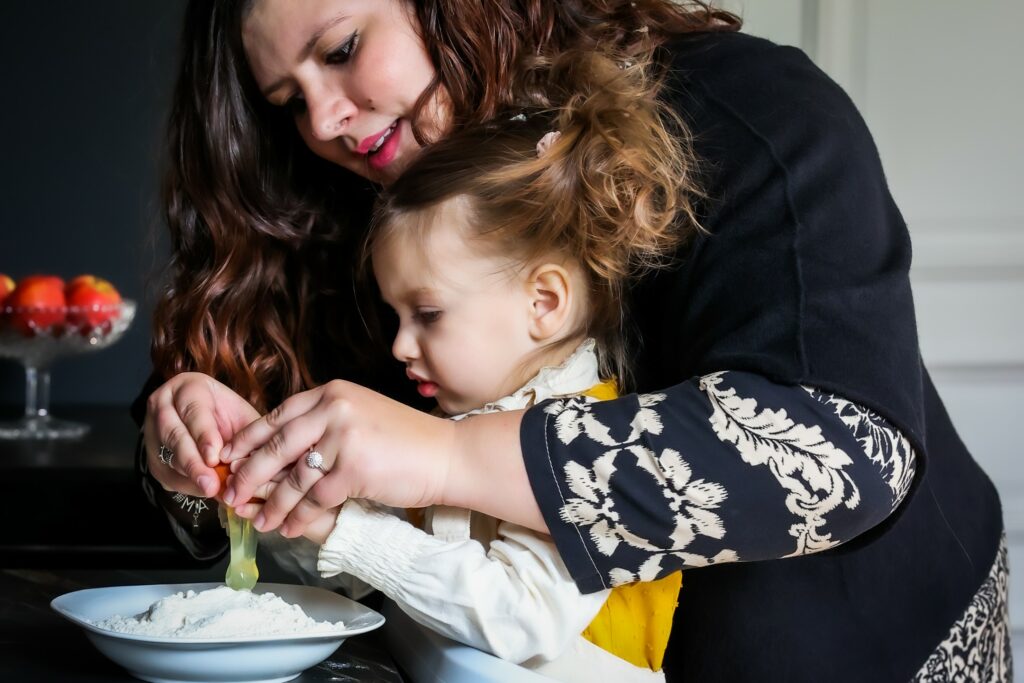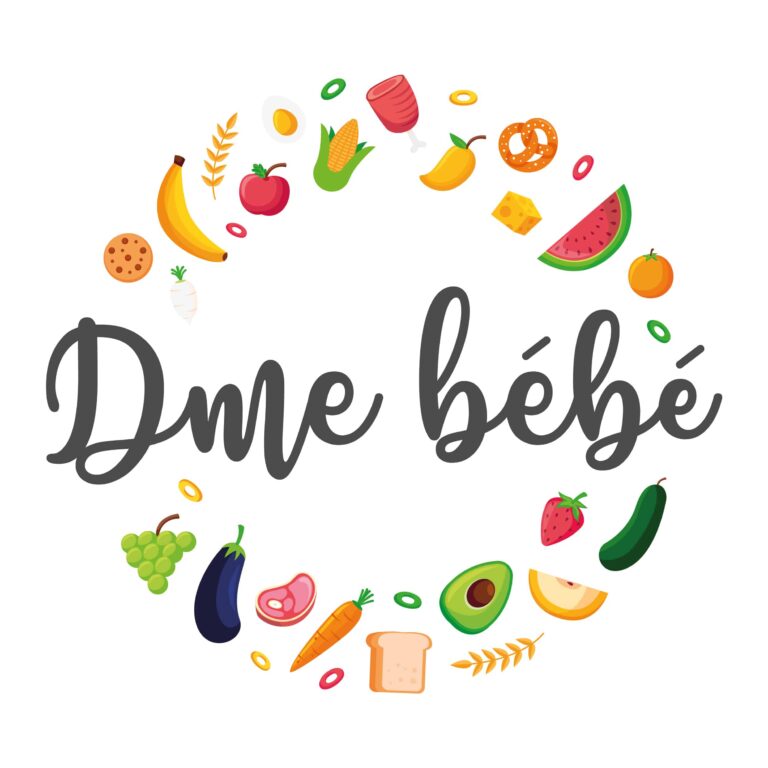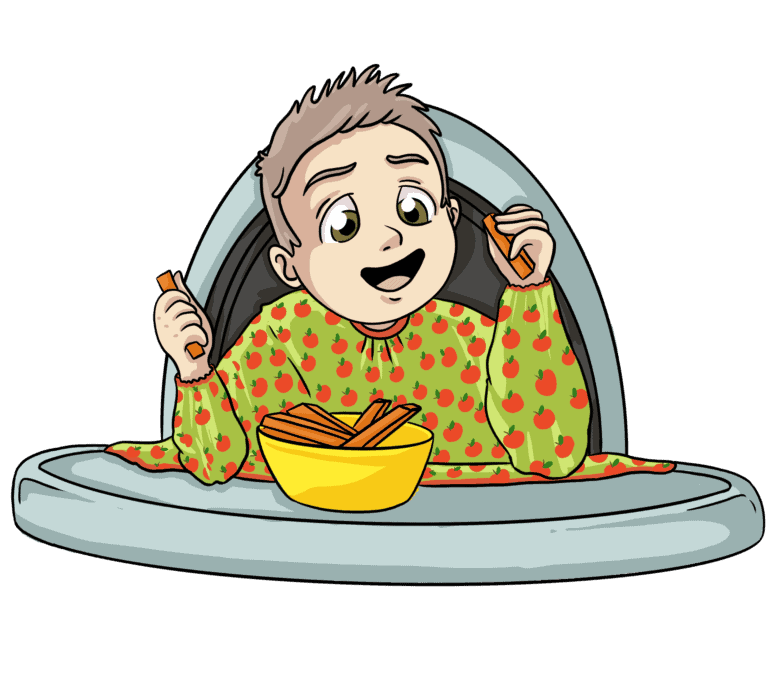During the food diversification led by the child, it is very interesting to introduce baby in the preparation of meals. This great family moment allows, among other things, to make him discover the ingredients present in his meal before eating them. But how do you have to do it?
Introducing baby in the preparation of meals is a very good thing!
Cooking with family allows your little bit to discover new flavors, new fruits and vegetables using the 5 senses while having fun! It is also a nice family activity that allows you to establish strong links with each member. But that's not all, this culinary activity carried out together brings several advantages for the whole family !

Get into the preparation of meals with baby
Baby's introduction into meal preparation is made from the choice of the recipe to make. Offer several recipes to make. Show him photos of the dishes so that he can choose the recipes visually. Start with recipes that you know to find out to manage the preparation of the meal and baby at the same time. Subsequently, add recipes that baby does not yet know among the selection of meals when choosing.
It is also important to establish some small safety rules to avoid any drama in the kitchen. Remind the places that can burn, the cutting utensils, etc. Do not hesitate to remind them of your little one before each meal preparation.
Each child evolves at their own pace, the indications of the age groups for the tasks to be performed in the kitchen below are informative. You will feel when your little one will be ready to accomplish new tasks when preparing the meal. Sometimes your little one will need your help to perform your task in the recipe such as mixing the ingredients or weighing them.
Cooking with a baby under 1 year old
Family cooking begins from a young age of baby! At the beginning, your little one will be seated in his chair near you when preparing the meal. He will be able to observe everything you make and especially discover the ingredients of the recipe with touch and smell. Do not hesitate to let your little fan handle the fruits and vegetables.
At this age, your child is in a phase of imitation of all the gestures you make on a daily basis. When preparing meals, give him a plastic bowl as well as a spoon so that he can reproduce the gestures you make in the kitchen.
Prepare meals with a little bit of 2 to 3 years
When he is a little larger, your child can start helping you in the preparation of meals by taking out certain ingredients from the cabinets or adding the ingredients to the bowl.
Your child aged 2 to 3 will also be able to wash the fruits and vegetables essential for the recipe and especially count the ingredients that are needed such as eggs, fruits, etc.
In the kitchen with your child from 3 to 4 years old
Around the age of 3 to 4 years old, your child will become a real little apprentice in the kitchen. It can perform more and more tasks like mixing the ingredients with your help, crush the soft ingredients using a fork or even form small dumplings with your hands. With the fine motor developed, your child can start peeling the fruits without utensil such as bananas, clementines, etc.
Your child aged 4 to 6 in the kitchen with you
Your child is starting to become a mini-chief in the kitchen, he will now be able to break the eggs and beat them. Whisk the ingredients with your help and especially use a children's knife to cut the soft ingredients!
The little culinary apprentice from 7 to 8 years old helps you in the kitchen
At the age of 7 to 8 years old came the long -awaited moment of the weighing of ingredients with the help of parents, the use of a sharp knife and especially electronic devices with your help. Your child will be proud to be able to use large devices when preparing meals!
Photo: © Moon and the other

A few tips for cooking with your baby
Before you embark on the creation of family meals, discover our few tips that could help you prepare for this family activity.
Start by preparing your kitchen by taking out the necessary ingredients as well as the utensils you will use. You can create several groups with the ingredients and utensils for each step of the recipe. Once your kitchen is ready for the preparation of the meal, call your little one to start the activity with the family! When your child is greater, he can help you in the preparation of ingredients and utensils.
The first step to make is to read the recipe well at your little one and to explain the slightly more technical culinary terms. You can read the recipe together or let your child read it completely when he is older!
When the dish is prepared, give your child the tasks that he will have the ability to do alone. Above all, make a completely step before going to the next one. In this way, your child can understand where you are in the recipe and follow all the steps with you.
So that your child can also participate in the preparation of the meal or snack, you must take care to choose a recipe up to their capacities.
It is important to remember that your baby is in apprenticeship and that he does not yet master the whole of his gestures 100%. It must therefore be accepted that there are small damage like flour that falls on the work plan or other. It doesn't matter, teach your child to clean together after dropping food. You must not teach your child that cleaning a little stupidity is painful. So we do it in joy and good humor!
Do not forget to enjoy yourself together with the right meal cooked with family !!

